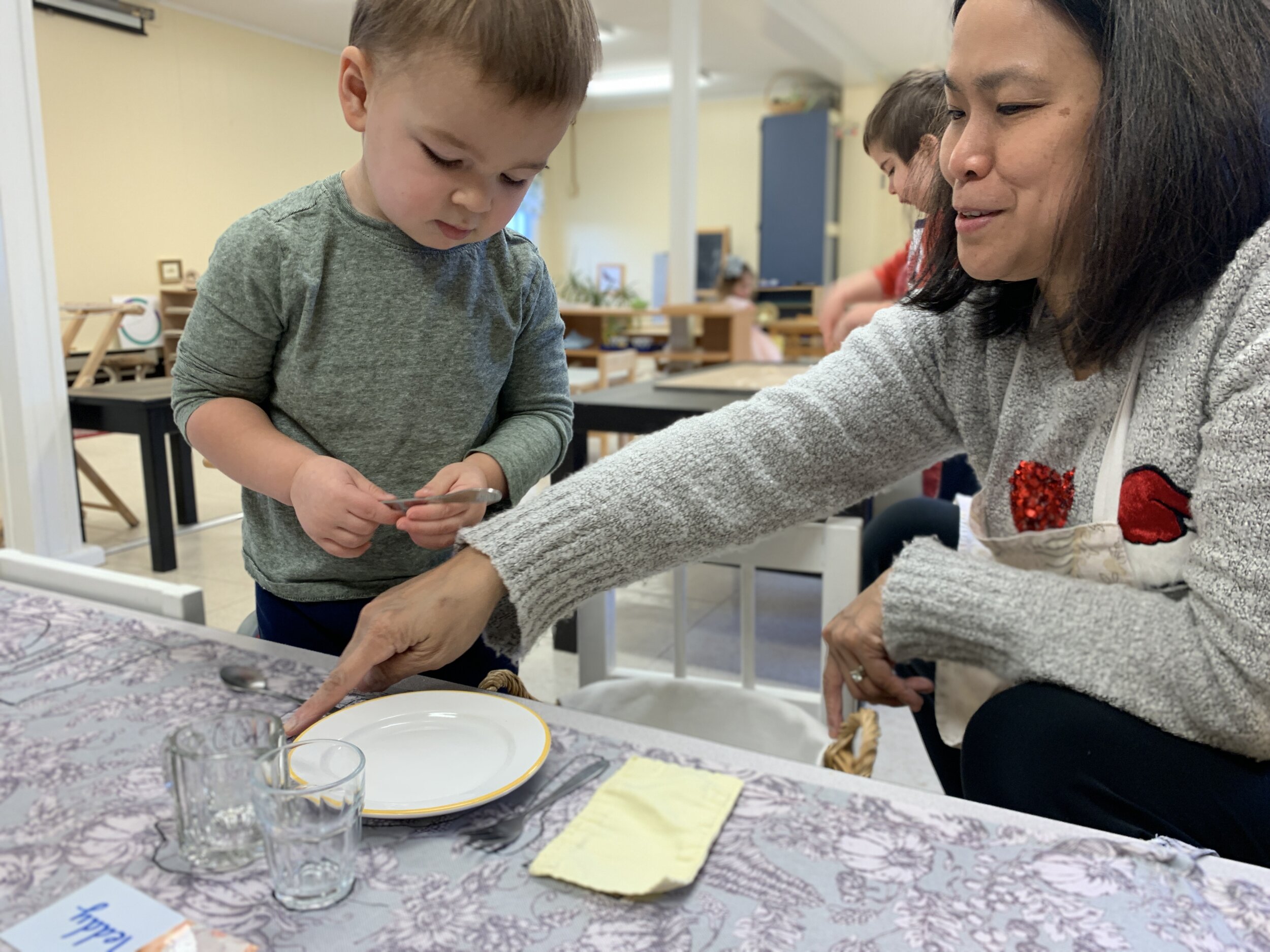Have you noticed that your child is more tired at the beginning of the school year? School is a child’s work and that work is to construct themselves, not just intellectually, but also physically, socially, emotionally, morally and spiritually. That is big work! It’s important to move at the child’s pace and allow them to properly adjust to a new place, a new schedule, new children, sometimes even new adults. Having a stabilizing period in which the child and guide get to know one another in the environment is important. During this gentle transition, a sense of security and comfort is fostered for the child toward his new environment and the group of children in the classroom. This sets your child up for a successful year of learning.
Why We Phase-In
The children are eager and excited about the year of learning ahead. The learning environment is stimulating; it is a place where independence will flourish as the child experiences freedom of choice within the classroom. Each child will gradually learn how to handle this choice and sense of freedom while respecting and caring for others in the classroom, the learning materials, and the classroom environment itself. The phase-in process allows the new children to get an overview of how things work in the classroom. Children who are returning from previous years are reminded of the classroom rules.
Phase-in sets the tone of the classroom by respecting and caring for one another, as well as the environment. It sets the stage for independent learning.
The gradual phase-in allows the child to absorb and digest new concepts and ideas without becoming overwhelmed and confused by too much information. This is why days are shorter in the beginning of the learning cycle.
Children need short increments of time in order to establish and re-establish procedures and ground rules. Routine is important to children and order is a fundamental human need! Children need time to orient themselves with classroom materials and the physical space (cubbies, bathroom location, etc.)
A Phase-In Schedule Is The Key To Success
We understand that slowly bringing the children into the new school year can feel like a juggling act for parents. Parents may need to alter working schedules temporarily in order to meet the needs of the phase-in schedule. Childcare might need to be arranged if that is not an option. In the end, the balancing act becomes well worth it. Children need to build trust in their environment, their peers, and their guides so that they can explore independently. During the first six years of life, the child’s mind works like a sponge, absorbing everything around it. Too much too fast can be overwhelming, and can ultimately hinder the child from reaching their full potential.
Following The Child
In Montessori, we use the phrase “Follow the Child” quite often. We believe that children are born with an amazingly powerful potential and desire to learn, and as adults our job is to simply guide them. We believe that applies to schedules as well. Placing a child in school to fit an adult schedule doesn’t always work. The days might be too long for them, they might get exhausted and grumpy, and it might discourage them to pursue their natural drive to learn. By starting out slowly, you are giving the child the opportunity to go at their own pace, learning with confidence, and building up their energy to learn for full work cycles.







